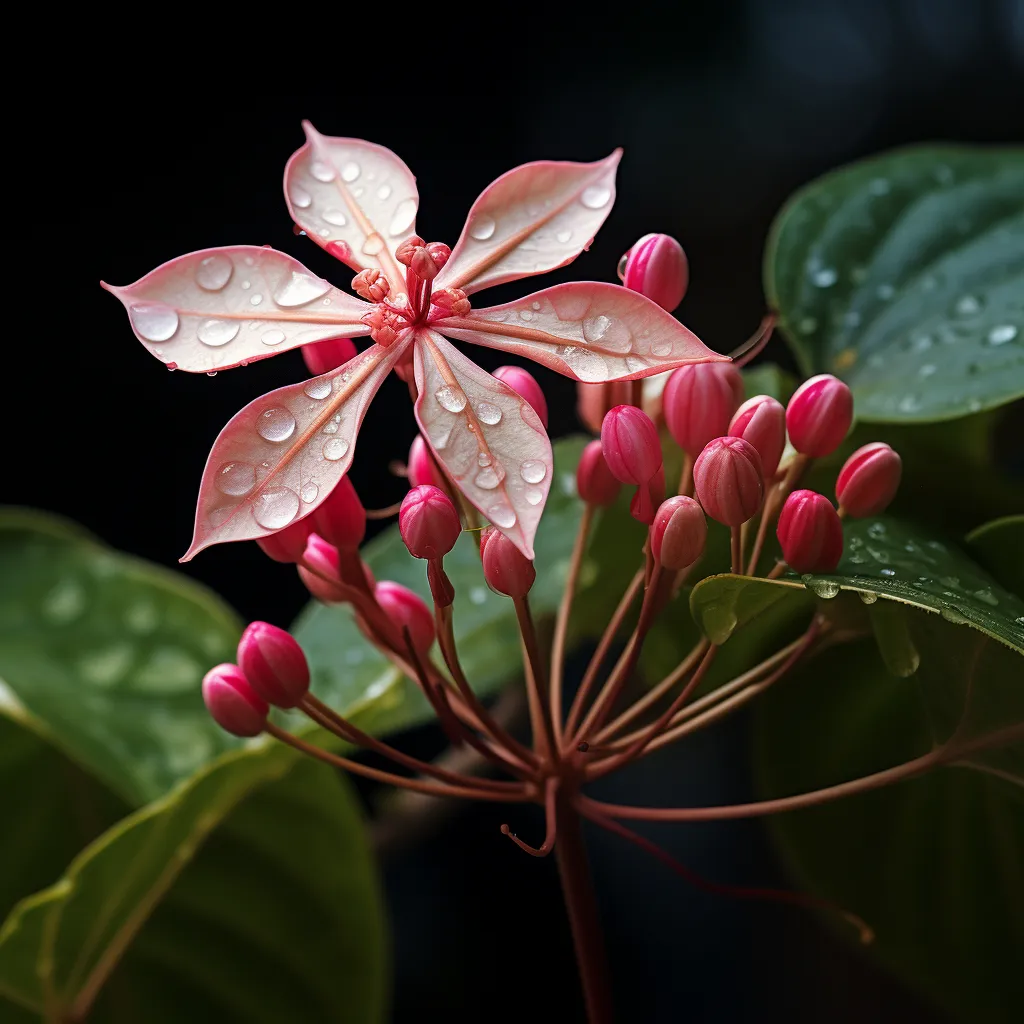Story of Day :
Contents
Clerodendrum thomsoniae (bleeding glory bower) Plant Care Tips
Welcome to my garden blog, where I share my love for all things green and beautiful! Today, I want to talk about a stunning flowering plant called Clerodendrum thomsoniae, commonly known as the bleeding glory bower.
If you’re looking for a unique and eye-catching addition to your garden or indoor space, this plant is definitely worth considering.
In this article, I will provide you with some helpful care tips to ensure that your bleeding glory bower thrives.
Introduction to the Bleeding Glory Bower
The Clerodendrum thomsoniae is a tropical vine native to West Africa.
It gets its common name from the striking red flowers that resemble drops of blood against a white background – truly an arresting sight! The flowers are borne in clusters that can reach up to six inches in diameter, creating a show-stopping display when in full bloom.
Light Requirements

When it comes to light requirements, the bleeding glory bower prefers bright indirect light or partial shade.
Too much direct sunlight can scorch its leaves and cause them to turn yellow.
Place your plant near a window with filtered sunlight or provide it with dappled shade outdoors.
Watering Needs
- The bleeding glory bower likes consistently moist soil but not waterlogged conditions.
- Water your plant thoroughly whenever the top inch of soil feels dry.
- Avoid overwatering as it can lead to root rot and other fungal diseases.
Fertilization
To keep your bleeding glory bower healthy and encourage abundant flowering, regular fertilization is essential.
Use a balanced liquid fertilizer and apply it every two weeks during the growing season (spring and summer).
Dilute the fertilizer according to the package instructions to avoid burning the plant’s roots.

Pruning
Pruning helps maintain the bleeding glory bower’s shape and promotes bushier growth.
You can prune your plant after flowering or during early spring before new growth appears.
Remove any dead, damaged, or diseased branches using clean pruning shears.
If your plant becomes too leggy, you can also trim back long stems to encourage branching.
Pest and Disease Control
While not particularly prone to pests or diseases, like all plants, the bleeding glory bower is not entirely immune.
Keep an eye out for common pests such as mealybugs and spider mites.
Regularly inspect your plant for signs of infestation, such as webbing or sticky residue on leaves.

If you notice any pests, treat them with an organic insecticidal soap spray or wipe them off gently with a damp cloth.
Additionally, ensure good air circulation around your plant by avoiding overcrowding with other plants; this will help prevent fungal diseases.
Propagation
If you want more bleeding glory bower plants in your garden or wish to share this beauty with friends and family, propagation is relatively straightforward:
- Select healthy stem cuttings that are about six inches long from a mature bleeding glory bower plant.
- Remove any leaves from the lower half of each cutting.
- Dip the cut end in rooting hormone powder to encourage root development.
- Plant each cutting in a well-draining potting mix and keep it consistently moist until roots develop (usually within a few weeks).
- Once rooted, you can transplant the new bleeding glory bower into its permanent location.
Conclusion

The Clerodendrum thomsoniae, or bleeding glory bower, is an exquisite flowering plant that can add a touch of elegance to any garden or indoor space.
By providing it with the right care – adequate light, proper watering, regular fertilization, and occasional pruning – you can enjoy its beautiful flowers year after year.
Remember to keep an eye out for pests and diseases and promptly treat any issues that arise.
Happy gardening!